Join the discussion below
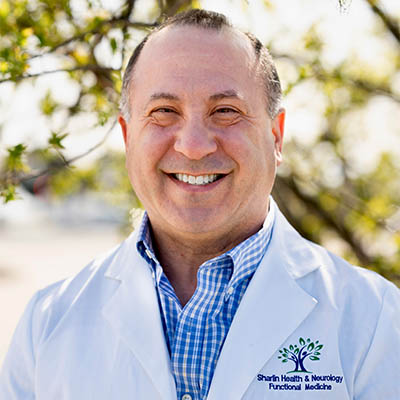
Kenneth Sharlin, MD, MPH, IFMCP
Kenneth Sharlin, MD, MPH, IFMCP, is a board-certified neurologist, consultant, functional medicine practitioner, Assistant Clinical Professor, researcher, author, and speaker. His medical degrees are from Emory University, The University of Virginia, and Vanderbilt University. His functional medicine certification is through The Institute for Functional Medicine. He is author of the... Read More

Dr. Bredesen earned his MD from Duke University Medical Center and served as Chief Resident in Neurology at the University of California, San Francisco (UCSF) before joining Nobel laureate Stanley Prusiner’s laboratory at UCSF as an NIH Postdoctoral Fellow. He held faculty positions at UCSF, UCLA and the University of... Read More
- Uncover groundbreaking methods to prevent neurodegenerative diseases
- Learn about the potential to reverse the progression of conditions like Parkinson’s
- Gain insights into the latest research and advancements in neurodegenerative disease management
- This video is part of the Natural Parkinson’s Solution Summit
Related Topics
Achilles Heel, Alzheimers Prevention, Amyloid, Amyloid And Tau Levels, Blood Flow, Brain, Brain Disease, Chemistry, Cognitive Decline, Daily Living, Diagnostic, Drug Treatment, Energetics, Faculty, Fellowship, Functional Medicine, Growth And Maintenance Mode, Inflammation, Macular Degeneration, Medical School, Mitochondrial Function, Montreal Cognitive Assessment Score, Msa, Neuro Diseases, Neurodegenerative Disease Prevention, Neurodegenerative Process, Neurologist, Neuropathologist, Neurosurgeon, Oxygenation, Parkinsons, Pathologically Speaking, Precision Medicine, Prevent, Protectant, Research Lab, Researcher, Residency, Reversal Of Symptoms, Reverse, Short-term Memory, Signaling, Spinal Fluid Results, Supply And Demand, TrajectoryKenneth Sharlin, MD
Welcome to the Parkinson’s Solutions Summit. I’m your host, Dr. Ken Sharlin. I hope you’ve been enjoying all of the wonderful interviews so far. I’m very excited to introduce a special guest today, Dr. Dale Bredesen. I’ve known Dr. Bredesen since about 2016 when we first met. I had the honor of being in one of the very first courses he put on for the ReCODE Protocol for Alzheimer’s disease. I know we’ll be talking about that as well. But today, what we’re going to focus on is a condition called Lewy body dementia, or dementia with Lewy bodies, and how that’s similar to and different from Parkinson’s disease and other related disorders. then ultimately whether it might make sense to apply the principles of the ReCODE protocol to patients who have this family of degenerative disorders. Without further ado, welcome, Dr. Bredesen. I’m so glad you could join us today.
Dale Bredesen, MD
It was great to be with you, Dr. Sharlin, and thanks for having me on.
Kenneth Sharlin, MD
Well, Dr. Bredesen, we met in 2016. At that point in time, you’d published one or two papers related to the reversal of cognitive decline. We’re certainly in the early stages. It was before your association with Apollo Health, and it’s just been so many changes that have happened since that time. For you and for everyone thinking about Alzheimer’s prevention, neurodegenerative disease prevention, and the reversal of some of the symptoms and signs of these diseases to put people on a much better trajectory, I wonder if you would tell the listeners and viewers who may not be as familiar with you a little bit about yourself and your background. You’re a neurologist, obviously a world-class researcher. How did this all sort of evolve, and where are things today for you?
Dale Bredesen, MD
Yes, thanks for asking. As an undergraduate at Caltech and worked at MIT, while I was there as well, I was interested in chemistry and got interested in the brain. I read a book called The Machinery of the Brain by Dean Wooldridge. I got very excited about the relationship between computers and human brains. How does this all work? then, of course, went off to medical school at Duke, and it became pretty quickly clear that we neurologists have a lot of people with whom we’re not very helpful therapeutically. That was kind of disappointing, and I could see that, whether you come in with Lewy body disease, ALS, or Alzheimer’s, as neurologists, we couldn’t do much. I thought about doing something else, like being a neurosurgeon or a neuropathologist. But I was very interested in brain disease. So I came out to UCSF for residency, and then ultimately fellowship and starting on the faculty. This was now back in the 1980s; we didn’t have, as you well know, something to offer these people, like, “Hey, if you’ve got Alzheimer’s, if you’ve got Lewy body, just take this pill; you’re going to be better.” I thought, “Okay, the best thing to do is go into the research lab.” I said I had a research group. We worked together for 30 years and published over 230 papers. looking at the fundamental nature of the neurodegenerative process and what’s causing your brain to degenerate. As can be seen, there have been all sorts of theories. It’s about type 3 diabetes; it’s about herpes simplex; it’s about prions; it’s about amyloid; it’s about Tao; it’s about mitochondrial damage. But none of these ideas that people had had ever led to any sort of significant treatment.
We were kind of going along, and we were looking at the signaling that happens with the amyloid precursor protein. APP, which is the parent of the amyloid that accumulates in Alzheimer’s, started noticing something interesting: this thing looks like a molecular switch. You can drive it in one direction, where it supports making synapses and maintaining synapses. Or you can take that same molecule. By interacting with different ligands or under different circumstances, you can drive it in the opposite direction. It’s literally signaling. The analogy was interesting to me. In what later came to be the pandemic in 2020, we were all told to keep shelter in place, socially distance ourselves, do not go to work, and be very careful. Of course, it was all about pulling back. Our country went into a recession. As everyone knows, the same sort of thing happens with this APP signal. Now, interestingly, it’s on the downsizing side of APP, where you make the amyloid. And in the upsizing, you don’t make the amyloid. In fact, you make sAPP Alpha, which supports synapse production and synapse maintenance.
We thought, “Could it be that this signaling event is related to what we’re seeing in Alzheimer’s?” In fact, what happens is that in Alzheimer’s, you’re literally going from a growth and maintenance mode in your brain and in your neuroplasticity to a protective downsizing mode. As you well know, amyloid is a protectant. It is there to sequester, or, in fact, as in these plaques, you often see herpes simplex. You sequester viruses, bacteria, and fungi, and you kill them. It’s an anti-microbial sequester. We thought we needed to develop drugs that drive you toward the growth side. But of course, as we did that, we identified several drugs, and we started a trial in Australia for one of them. But I realized that this is not going to be good enough to just have one drug because there are all sorts of signals coming into the brain. If we’re going to change that equation, then we’re going to have to look at all the different things. So that got me interested in functional medicine. I didn’t know about functional medicine before that. I thought, This is interesting. We need to look at what’s in the essence of this. What we found is that the two major players and these are important certainly in Lewy Body and probably in Parkinson’s as well, but certainly in Alzheimer’s, are that it’s about energetics, and there are dozens of things feeding into that mitochondrial function: blood flow, oxygenation, and things like that. then inflammation, the activation of the innate immune system, very much like the big issue in COVID. The idea is that you need to change if you’re in a situation where the energy is too low and the inflammation is too high. You need to change that equation, which is exactly what the approach that we all take does. So we realized, okay, these different neurodegenerative diseases, whether you’re talking about Parkinson’s or Lewy Body or MSA or Alzheimer’s, are about supply and demand and have a supply that’s too low or a demand that is too high. We need to, for each person, identify all these things that are driving this. If your blood flow is not good, if you have sleep apnea, if you’re dropping your oxygen saturation too much, if you’ve got a change in your oral microbiome that’s giving you inflammation in your brain—dozens and dozens of these things—you’re going to be on the wrong side of the equation. Over time, you will have a degenerative event. But the great news is we should now be able to take the unique biochemistry and genetics of each of these diseases, be they MSA or Lewy body. Look at the Achilles heel. The Achilles heel in those cases of synucleinopathy has largely been complex. One of the mitochondria in Alzheimer’s is all about neuroplasticity, mitochondrial function, and things like that. With ALS, it appears to be more about the ability to reuptake glutamate, which is otherwise cytotoxic, driving them. It has a different Achilles heel.
For each one, when we make a diagnosis, it’s about telling you what the likely things are that are driving this particular neural subnetwork to have a poor supply-to-demand ratio. That gives us a lot of insight into what you measure, how you treat it, and how you prevent it. so very excited. As I told you before, we started at the Pacific Neuroscience Institute with Dr. David Merrell and Dr. Dan Kelly in their groups, and we’re now setting up the first precision medicine program for neurodegenerative diseases. This will include macular degeneration, Parkinson’s, MSA, and all the other things you’ve talked about. I’m hoping it will be up and running by the first of the year. As you said earlier, this is an exciting time. Things are changing rapidly; we had just nothing to offer. When I was training in the eighties and when I was in medical school in the seventies, there just hasn’t been anything. We’re in a new era. We’re kind of coming out of the dark ages, and it’s so exciting to see people. You were the major contributor to the paper we all published together. It was 15 different sites where we had people who had documented improvement in their cognition, and you had more examples than anyone knew. This is an exciting time. I’m just writing a paper now on people who’ve had many years of improvement. The very first patient who came through was in April of 2012. She’s now over 11 years old and still sustaining her improvement. It’s exciting to see people get better and then sustain their improvement again. This is a new era.
Kenneth Sharlin, MD
It’s a new era, and not to digress too much on the drug treatment for Alzheimer’s disease, but it is a new era even for that. Seeing how all these puzzle pieces fit together, I had clinic this morning. I saw a patient review their spinal fluid results because that’s primarily what we’re doing on the precision medicine side from a diagnostic perspective, measuring the amyloid and tau levels. I said sort of the good news and the bad news. The bad news is, yes, this is Alzheimer’s disease. Pathologically speaking, it’s Alzheimer’s disease, meaning this gentleman, who was aware of some cognitive changes, is still at a fairly high Montreal cognitive assessment score. He was hovering just at the low end of the normal range, or 25, 26. This is a scale that’s measured up to a score of 30, and 26 to 30 is considered a normal score. But we’ve known for several years that it was established through a consortium that included the National Institutes of Health and Kaiser Permanente with the idea that we can not only diagnose things like Alzheimer’s disease clinically but also a progression, a worsening of short-term memory or delayed memory, and then eventually the involvement of instrumental activities of daily living and so forth. But we should be looking at more precise ways of measuring and identifying this disease. This is where looking at spinal fluid level measures such as amyloid and tau or doing PET scans and things like that, or more recently, now we’re doing blood work even to look at that through companies like C2N Diagnostics. But the point here is that we can identify the problem before it’s a huge problem. I would say it’s like the fire that starts in the kitchen when there’s a little smoke and a little flame. Let’s catch it there before the whole house burns down. Now we have an opportunity to call in the fire department. We get the work of Dr. Bredesen with the ReCODE protocol, and potentially we can involve some of these new emerging pharmacotherapeutics; donanemab is one example. Soon, we hope it’s not yet FDA-approved, but probably be by the end of the year or early January 2024. But anyway, we can do things now. Finally, we can do things now. It’s so important for people to understand. That is the silver lining when you hear the bad news that this is early-stage Alzheimer’s.
Dale Bredesen, MD
Absolutely. What’s happening is that we have an approach where we can do a precision medicine sort of approach, and we can see people get better. We had, as you mentioned, the drug approach, which doesn’t necessarily make you better, but it slows your decline. Bringing these together is the future. We can say we can come in now, improve your cognition, and then slowly remove the amyloid. of amyloid as a kind of long-term cytokine. Yes, it is there as part of the inflammatory response. It is there. It’s something that can damage synapses. In the long run, we will slowly want to be able to move that out. But with the idea of just doing that and nothing else, you’re still leaving a lot on the table. You can do a lot better than that by getting their synapses to function better. In the long run, it’s going to be very exciting to be able to combine all of this and get some tremendous and sustained improvements.
Kenneth Sharlin, MD
If I can just quickly summarize it, then we want to talk a little bit about Lewy Body disease. But what Dr. Bredesen is saying is that if you imagine that you have a car, you’ve got your accelerator and you’ve got your brakes, and you need both to get a move forward, but you got to slow down. But if your accelerator somehow gets stuck, you’re in trouble. If your brakes get stuck, you’re in trouble. Both are key parts. What he’s saying is that with this amyloid precursor protein, the cell has the capacity to evaluate the cellular environment and say what is needed at this moment in time. Do we need to be in growth mode? Do we need to be in paring-down mode? It does this by looking at all of the signals that are coming into the cell. That’s the key to the ReCODE protocol. When people say, “Well, what causes Alzheimer’s?” Well, a lot of things cause Alzheimer’s. He’s talked about mitochondria. He’s talked about inflammation, and we talk about metabolism playing a major role in things like diabetes. But the protocol is about looking at what you many years ago coined: the 36 holes in the roof. It’s many things. We can’t just focus on one thing; we’ve got 35 more leaky holes, and we haven’t ultimately accomplished anything, but this is possible. We talk in science about reproducibility, which is one of the key concepts of scientific research. Dr. Bredesen is leading the way. But the good news is that there are enough scientific papers out there that have said, yes, these things make a difference, and so with that confidence, you can engage someone who is familiar with this sort of approach and make a difference in your own life, I would encourage all the folks watching this interview to take action for sure.
Dale Bredesen, MD
Yes, I know you probably know Dr. Heather Sandison just published her own trial that reached very similar conclusions to the clinical trial that we published last year. These things are all freely available online. You can read them. Seeing people improve, does not just slow their decline, but improves growth. The future is bright.
Kenneth Sharlin, MD
Yes. There are many treatments in addition to making these critical changes, which is certainly not either. There are many studies and many treatments in the pipeline. Dr. Cummings publishes his paper annually, talking about what’s going on. We’re even involved in a trial with a company that has a compound that’s FDA-approved in South Korea. But for a different reason that you’ll see, its mechanism of action is very similar to Cialis and Viagra, but it crosses the blood-brain barrier. It’s called a phosphodiesterase inhibitor. In this particular trial, we’re doing the phase three trial and the phase two trial. The subjects involved in the trial had improvements in cognitive function, which kind of makes sense because not only are you clearing amyloid because you’re improving the outflow of the brain, but you’re also bringing more oxygen, nutrients, and so forth to the brain tissue that needs it. very exciting time.
Dale Bredesen, MD
We are at a point now where Alzheimer’s is optional. If you’re a young person and you want to make sure not to get it when you hit 40, get a cognoscopy. Just as everyone knows, to get a colonoscopy when you turn 50, if you’ve turned 40, or if you’re over 40, get a cognoscopy. See where you stand, see where your blood markers are, and can you mention something very important? It used to be that we had to check CSF markers. Now there are, for the first time, biomarkers that you can get in your blood, like pTau181. Soon there will be pTau217, and soon there will be GFAP. Currently, as you mentioned, you can get Abeta 42 to 40 ratio, and I know C2N has this, and Quest has offered this. There are ways that you can look and see this coming, which is so important. You can see this for years ahead of time, and make sure that you don’t ever progress to the final stage, which we call dementia. You can look early. The great news is that you have a ten-year period of so-called SCI subjective cognitive impairment, on average ten years, where you can do something very early on and reverse the decline. Everyone should get active prevention or the earliest treatment. Please don’t wait. We can reduce the global burden of dementia.
Kenneth Sharlin, MD
Yes. Folks watching this who have been to a functional medicine doctor may know that very often functional medicine doctors don’t take insurance. But I don’t want those types of costs to get in your way. You should know, too, that even a Center for Medicare and Medicaid Services has a specific CPT code. That’s a code that is assigned to a procedure or a type of office encounter that allows it. It’s basically called a chronic care management code that allows for extended time with your physician. It is specifically designed for cognitive screening and for your doctor to create a whole cognitive care plan by spending more time with you doing these tests. Those two tests are covered by insurance. Don’t let these costs get in your way of checking your brain. Dr. Bredesen, I wonder if we can go ahead and move into the discussion of a disease that some people may know by name. Some people may know that because the great actor and comedian Robin Williams took his own life in the face of this disease and maybe the concerned about what the future might look like for him, I don’t know all of his motivations. We talked about the fact that this disease is very often characterized by significant changes in mood—not just memory or movement, but Lewy body dementia, or Lewy body disease. As far as I know, these are more or less all synonymous terms for the second most common and degenerative dementia. Is that correct?
Dale Bredesen, MD
Yes. Now, people talk about that. In some studies, vascular dementia is the second, and in some studies, Lewy bodies are the third. There are about a million people in the United States who have Lewy bodies, which is very common. About the same number as Parkinson’s, which is pretty close between Lewy body and Parkinson’s. As you indicated, these are all related MSAs; those three are all these so-called synucleinopathies. Just as amyloid is anti-microbial, so is alpha-synuclein. It is another antimicrobial. It’s interesting because we think of amyloid as being mostly extracellular. There is some intracellular amyloid. We think of alpha-synuclein, which was named because it was both in the nucleus and at the synapse. That’s why synuclein tends to be something that tends to be inside the cell in general. But of course, cells ultimately die. You now have extracellular alpha-synuclein. It is presumably doing the same sorts of things, going after pathogens but also binding various toxins and things. It’s interesting that Lewy body disease is often mixed up with Alzheimer’s. Many people with Lewy body disease will have an initial diagnosis of probable Alzheimer’s disease. Some people who are thought to have Lewy bodies end up with Alzheimer’s. The final point here is that the pathologists will tell us, and Dr. John Q. Trojanowski, a very famous pathologist from Penn, has pointed out that somewhere around 60% of Alzheimer’s patients have some Lewy bodies. There is this kind of gradation where you can have mostly Alzheimer’s and a mostly Lewy body. We see a lot of people who have some as well. It’s interesting to me because we think of Alzheimer’s as more temporal and parietal, and we think of the Lewy body as more parietal and occipital. But we do see forms of Alzheimer’s that are more parietal-occipital, and the famous one is posterior cortical atrophy. One of my questions has been: are these the people who are going to have a greater likelihood of having more Lewy bodies? When you see this, and by the way, we’ve had people with Lewy body disease and Lewy body dementia who’ve responded nicely to reCODE, you have to focus a lot on the toxins because Parkinson’s and Lewy body tend to be toxin-related illnesses, or Alzheimer’s. Some of them are toxin-related illnesses, but many of them are pathogens: p. gingivitis, herpes simplex, and things like that. As you indicated earlier, there are 36 holes in the roof. There are lots of things that can contribute. But people who have a Lewy body look a little different. They often have visual hallucinations, and although I find that those are often more frequent, they’re a little bit later when you see the early ones. They don’t necessarily have that, but they often have a history of toxin exposure. They will often have this waxing and waning, which has been called showtime. They have times when they’re good and times where they’re not so good, and then more of a waxing and waning than your typical Alzheimer’s patient. They can sometimes have delusions. They think that someone came over earlier in the day, but they didn’t. They also have this late sleeping pattern. Well, they have someone who lives all of his or her life. They got up at 6:30 or seven or 7:30 in the morning, and now suddenly they’re sleeping until ten or 10:30 or 11, and something has changed. What’s going on? So that’s another piece of this. They do have Alzheimer ‘s-like dementia. The other thing to note is that they have a little bit of Parkinson’s. It’s almost as if someone took a little Parkinson’s and a little Alzheimer’s and put them together. That’s what a Lewy body looks like. so they will often have slowness in their gait. Their mitochondria aren’t firing on all cylinders, so they’re going to be slowing up, their facial expression changes and their speech can change. They have what neurologists would call Parkinsonism.
Kenneth Sharlin, MD
Let’s go ahead, please.
Dale Bredesen, MD
I would mention that cortical basal degeneration is a rare form, but it’s also related. In that case, you don’t have synuclein and you have tau, but they have Alzheimer’s changes in about 20% of them. They and Dr. Craig Tanio have had a remarkable case recently where he has done some beautiful and very successful treatment, identifying critical toxins that this person was exposed to. This area of neurodegenerative disease, which has been hopeless for decades, is opening up.
Kenneth Sharlin, MD
I was going to say that oftentimes the folks who have Lewy body dementia may have mood changes, personality changes early on some falling, and Parkinsonism starts to appear a little later as things begin to evolve. that with what we call Parkinson’s disease, dementia, I’ve read some papers that think that maybe that’s even the same disease as Lewy body, although the localization, as I understand it, of the alpha-synuclein is exactly the same. That being said, one of the fundamental differences is that with Parkinson’s dementia, the movement disorder piece is an earlier presentation than in the Lewy Body folks.
Dale Bredesen, MD
That’s such a good point, if you look. It’s interesting to me what the neural pathologists have told us for years, and they’ve told us that Alzheimer’s looks like it somehow comes in through the nose because of where it spreads. When you look at Parkinson’s, as you said, Parkinson’s can go on to dementia. That looks like it’s coming from the gut through the brain stem and then going from the brain stem up. On the other hand, when you start with the Lewy body, you get the motor later, as you said, and you start with the cognitive changes.
This looks like something that’s coming through—the sinuses that’s coming. you’re breathing, and it may be that there is some sort of pathogen, or there is a toxin that you’re breathing or something like that. This is starting to be more cortical. then, to some extent, you’re getting some brain stem pathology. But the two look quite complementary. They have different starts and different spreads. But of course, with this prion spread, you have a protein, in this case, alpha-synuclein, that is beginning more of itself and spreading throughout the brain, presumably to fight the pathogens, to fight that, whatever the insults are that are starting this.
Kenneth Sharlin, MD
Yes, we interviewed the chief medical officer, Dr. Todd Levine. He’s with CND Life Sciences. We do a lot of this in one skin-punch biopsy. I just want to remind folks that this is a synucleinopathy. If there is a question that you have Lewy body disease within the appropriate clinical and physical history, if that’s what’s suggested by the presentation, then the skin punch biopsy can confirm that. They did present some data where they could tell differences under the microscope between Parkinson’s, alpha-synuclein, Lewy body disease, multiple system atrophy, and what’s called a primary autonomic failure as well. Or they could distinguish, based on the microscopy, what the person had. But it’s always important to put it in a clinical context.
Dale Bredesen, MD
That’s fantastic. We’ve just started doing these on the patients where we suspect that there may be Lewy body disease. Do you have a sense of the sensitivity and specificity of these in this particular test?
Kenneth Sharlin, MD
I do. It’s been reported to be very high, 96% on both sides, in terms of sensitivity and specificity. It’s an excellent test. I don’t even order those scans anymore, although there’s some proposal that’s come up recently about a new staging system for Parkinson’s where we could combine looking at alpha-synuclein with a dopamine transporter, concentrate patients through the DaTscan, and have a more accurate neuropathological staging system. But for now, the skin-punch biopsy is, to me, a better way to go.
Dale Bredesen, MD
Fantastic.
Kenneth Sharlin, MD
One of the things that’s important is that we’ve been having this pretty intense discussion. It’s been a lot of fun because we focus a lot on a disease-centered approach. We say, Well, this is Alzheimer’s, this is Parkinson’s, and this is Lewy body dementia. There is truly value in sort of naming the disease. Our brains gravitate. We want an explanation, and we want to understand. We want to have that. let me know what’s going on so I can understand not just what’s happening now but what might be happening in the future. But we also do it because, traditionally, we want to assign a drug to that diagnosis. But the paradigm is now starting to shift, and it certainly doesn’t in any way disqualify the need to understand what the primary diagnosis is, which is at least the primary driving pathology. But now we want to say, What are all of the things that underlie that? Why is this happening? Because that’s where empowerment comes from.
Dale Bredesen, MD
That is the fundamental difference between 20th-century medicine and 21st-century medicine. I was taught to make a diagnosis. What is it? Is it Alzheimer’s? Is it Parkinson’s? Is it a Lewy body? Now, as you said, it’s all about why. Why did you get this? Just as an example, we had a patient recently who was doing well and turned out to have positive pTau-181. some, but modest, so yes, there’s some Alzheimer’s component. That form of signaling is telling your tau to get phosphorylated, and that’s part of the pulling back that is present. We know that, but it’s not very overwhelming. The person also had a history of CTE, and some of the symptoms were that the person also had some clear vascular changes and vascular damage. This person had a cognitive decline. But was it Alzheimer’s? Well, yes, partly. Was it CTE? Well, yes, partly. Was it vascular dementia? Well, yes, partly. But so you have to now take those all into account. Being able to say, Why is this so that you can now address all the things? We’re certainly removing anything that is continuing to push you downhill. If you have a Lewy body, you’re present, you’re starting to go downhill, and you’re living in a place where you’ve got a lot of toxic exposure. You need to remove that, you need to detox, and so on, but at the same time, you want to support the dopaminergic system and the cholinergic system. You want to stay away from classical antipsychotics, which can be damaging to these people. We’re getting a much more symptomatic and biochemical view of what’s going on here than just the old idea that it’s just about pathology. Yes, this person had a Lewy body.
Kenneth Sharlin, MD
One of the things you shared with me the last time we saw each other in person is that you and your company are leading the way and opening up clinics around the country. More and more people are seeking out this kind of care and having access to it. What’s your plan? Tell me, and give me a little update.
Dale Bredesen, MD
Yes, it’s a great point. The big change is going to be this precision medicine program in Los Angeles. But of the first couple of clinics, one opened in Sarasota, as there have been over 2000 physicians that have taken the training at various times from 2016 all the way until the present. These are in ten different countries and all over the United States. But, as you well know and as you saw in the paper where you were a coauthor, some are getting better results than others. It depends on how you’re doing it. I would say this is much more like a surgical procedure than it is like classic prescription pad medicine. You’re looking at lots of different things. You’re doing the right thing at the right time for the people in your way. If you do that right, people are getting much better. If you’re not, or if you don’t find the things that are driving this, then you have more of a problem. I should just say, parenthetically, that we’ve had people who would improve for years and then start to backslide. We look to say, Why is that? find new things, address those, and they come back. This just happened to a woman who was in her seventh year and doing great. She started to have problems again. We found out what the new things were, and she’s doing well once again. Yes, the first clinic was in Sarasota, and the second one was in Jacksonville. The third one is probably going to be in Salt Lake City. That’s just being set up. The hope is that we will have these all over the country or interact with clinics that are already present, like your own, so that we can get them. The goal here is the same for all of us. How do we get the best outcomes? How do we truly reduce the global burden of dementia and, ultimately, of other neurodegenerative diseases as well? Things are moving rapidly, and in this era, we’re coming out of the dark ages of an inability to treat neurodegenerative conditions.
Kenneth Sharlin, MD
It’s so true. To your point, this is not a 14-day course of antibiotics once done. This is a lifelong commitment to change. We’re co-hosting with Dr. Sandra Scheinbaum, who has a functional medicine coaching academy. I have such a huge commitment to the idea that health coaching is absolutely integral to the success of the kind of work that we’re doing.
Dale Bredesen, MD
Absolutely. It’s one of the most critical components because people, like coaches, can help get the best outcomes by working with patients to make sure that they’re doing the things that the physician has suggested. It’s just a critical piece going forward.
Kenneth Sharlin, MD
Dr. Bredesen, if someone wants to find out more about you, about the reCODE program, or about finding a practitioner, what can they do? Where do they start?
Dale Bredesen, MD
Yes, in lots of ways. As of now, there are a few books out there. There’s a book called The End of Alzheimer’s, which was on the New York Times bestseller list for four or five months. It’s in 33 different languages. You can find it very easily on Amazon or wherever you are at Barnes & Noble, wherever you like to buy books. Then there’s another one, The End of the Alzheimer’s Program, and a third one, which is called The First Survivors of Alzheimer’s. You can also go on Facebook, Dr. Dale Bredesen, or what used to be called Twitter, and I guess now it’s called X, and then also on Instagram, and then I would encourage people, please, if you’re 40 or over, to get a cognoscopy. It’s much more pleasant than a colonoscopy, having done both of them. I can tell you that. You can find out where you stand, and please get active prevention or the earliest treatment. Let’s make it so that dementia is a rare problem. then you can also check with the Civic Neuroscience Institute and also through the so-called Gray Matters Clinics. There are lots of ways, and again, there is so much that we can all do. If you’re interested in taking the training, there’s ReCODE training, ReCODE 2.0 training now, which is over 30 hours from all sorts of experts. Chris Shade on Toxins and Neil Nathan on Biotoxins—lots of great stuff. Let me just end by saying that, as Dr. Sharlin knows very well, one of the biggest challenges for people who are just getting started is finding the right diet, getting the right food, and going into the right place. It’s something that people often say—well, I just don’t want to do this. We worked with nutrition for longevity, and it was called N4L. They’ve done such a great job with all sorts of medically appropriate diets, and they have produced the Keto Flex 12 3, which you can see if you go online: ketoflex123.com, and they have ready-to-ship meals, and I’ve eaten them myself; they’re fantastic. I’ve been excited about what a great job they have done with making these things delicious. They help you get into ketosis on a plant-rich, mildly ketogenic diet. I would encourage people to give those a try, and Nutrition For Longevity has just done a great job there.
Kenneth Sharlin, MD
Dr. Dale Bredesen, thank you so much for participating in the Parkinson’s Solutions Summit. I know that people who’ve been enjoying this today have gotten lots of rich information and can start to take some action steps to change the trajectory, whether it’s their Parkinson’s, their early stage, Lewy body disease, or multiple system atrophy Alzheimer’s disease. We’ve got to think of these as having common root causes. Ultimately, it’s about personalized and precision medicine, figuring out what your imbalances are, and working with a team of providers, all of whom are going to be experts in their own area but focused on you and helping you to correct and maintain that new trajectory indefinitely.
Dale Bredesen, MD
Fantastic. Thanks so much, Dr. Sharlin. Always great to talk to you.
Kenneth Sharlin, MD
Bye-bye now. Thank you.
Downloads



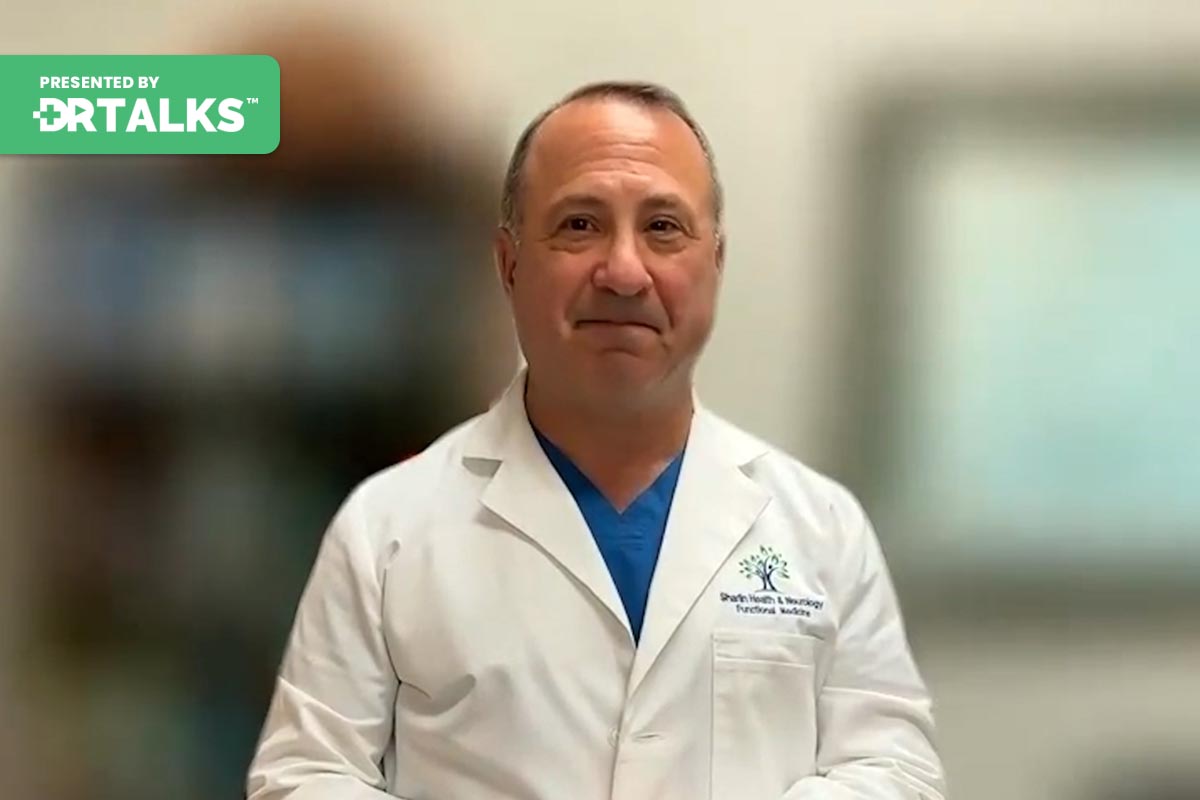
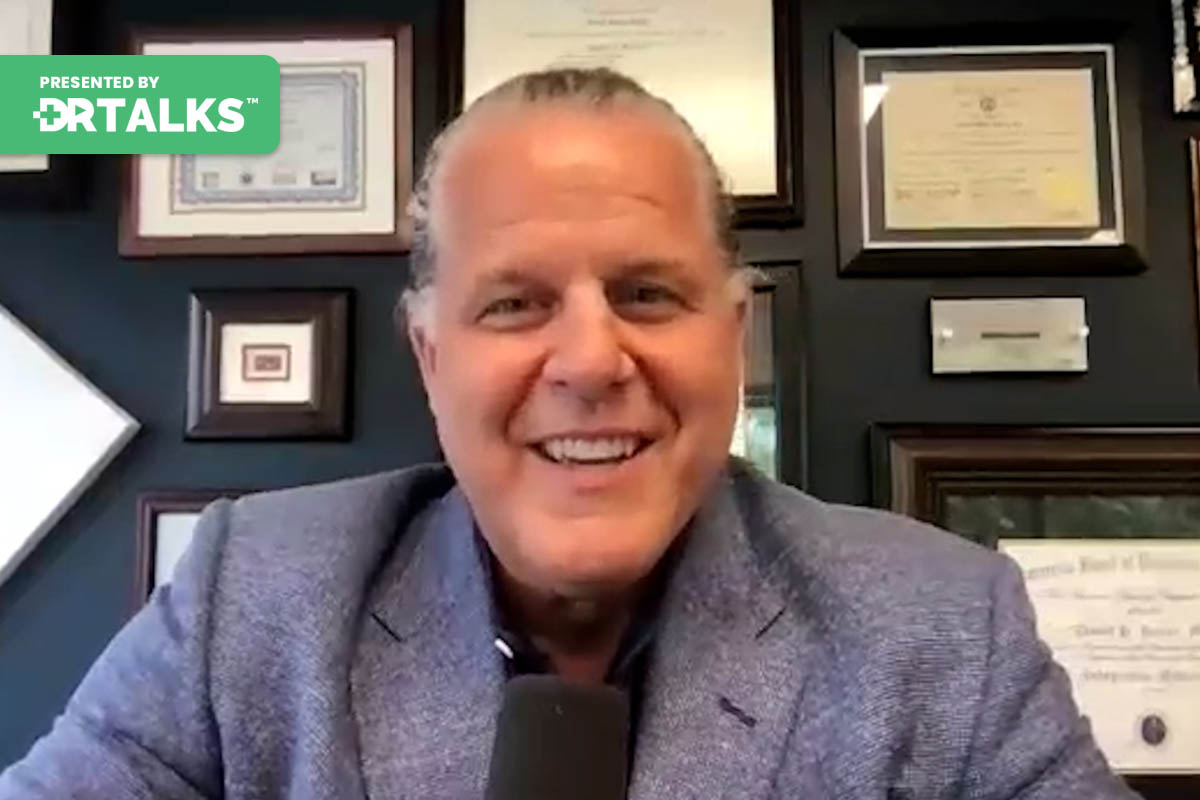
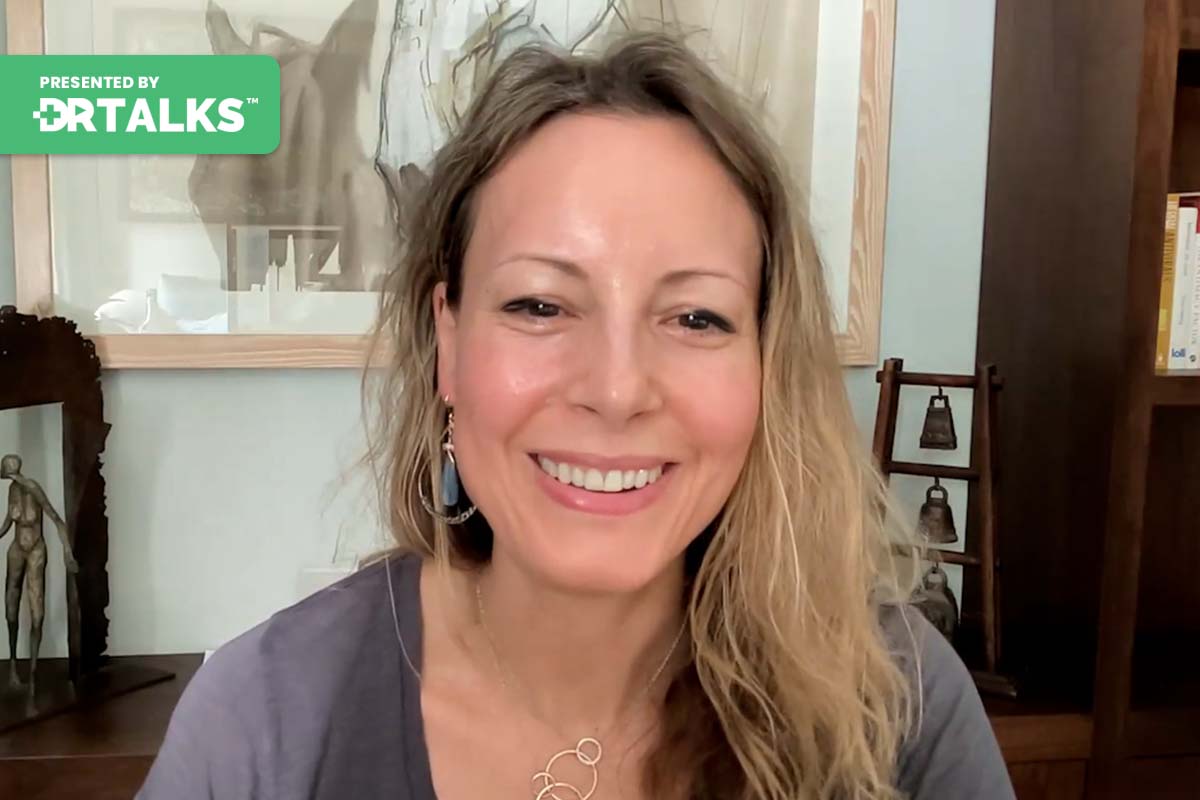
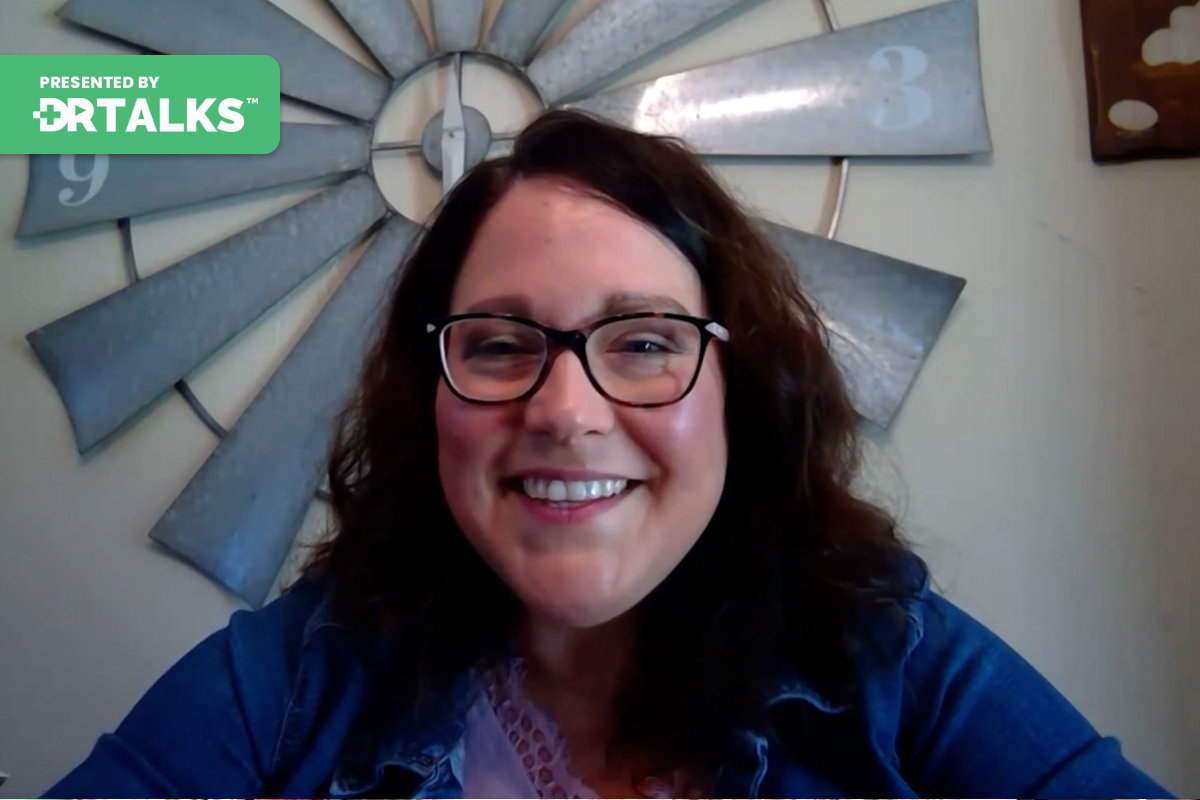
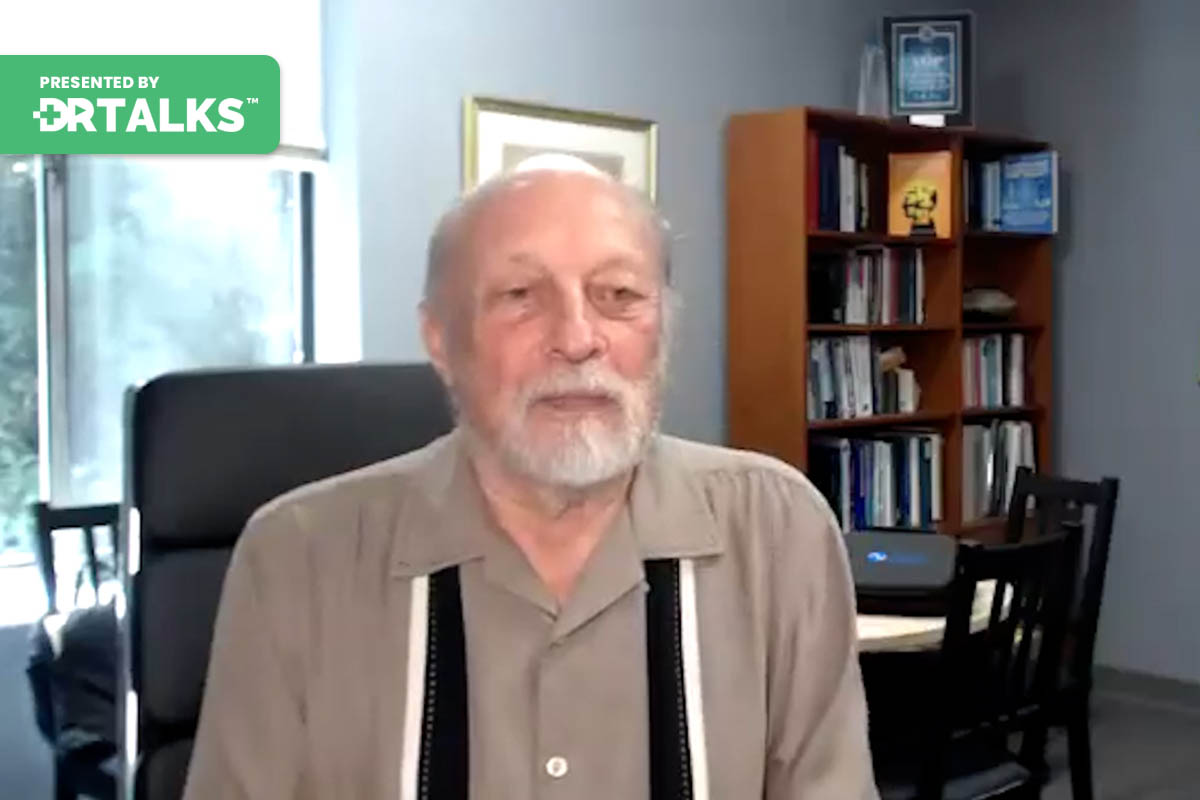



Parts of Dr Bredesen ‘s talk is above my level of comprehension.It felt more like he & Dr Sharlin were having a clinical chat in the cafeteria @ UCSF. My takeaway is that there are many research protocols offering hope & individualized treatment options—-always a good news